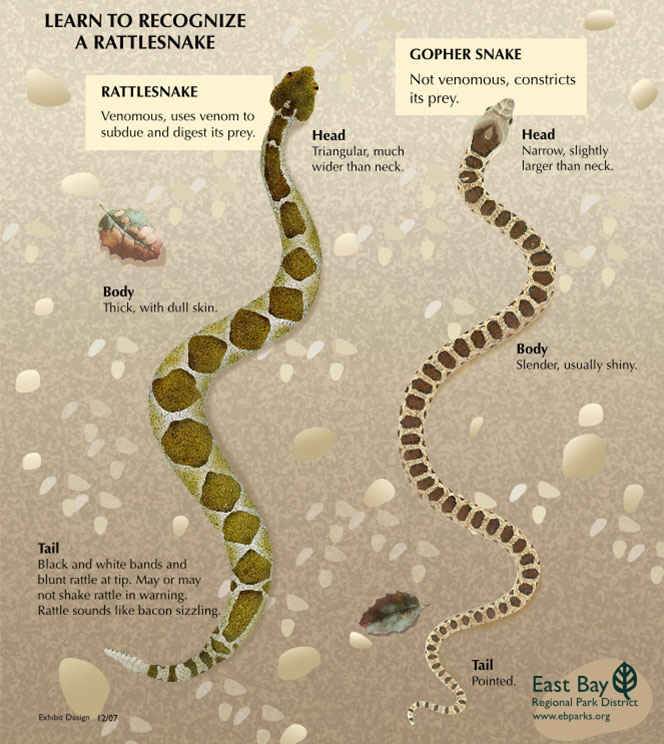
Stay aware on East Bay trails to avoid rattlesnakes

 CONTRA COSTA COUNTY, CA — As spring gives way to summer, it’s time for my annual advisory about rattlesnakes, which are common in the regional parks and other Bay Area open space.
CONTRA COSTA COUNTY, CA — As spring gives way to summer, it’s time for my annual advisory about rattlesnakes, which are common in the regional parks and other Bay Area open space.
I haven’t seen any so far this season, though other people have reported sightings.
Snakes regulate their body temperature by moving back and forth between sun and shade. In general, the best way to avoid rattlers is to stay on official trails; don’t take shortcuts through tall grass and brush. If you stop to rest, avoid the rock piles, logs and tall grass that are snake habitats.
If you see a snake on a trail or fire road, take a wide detour. And please do not tease it or try to pick it up. That’s how most bites result.
Watch your step
Rattlesnakes are not aggressive. They will avoid us if possible; we’re much larger than the small rodents and lizards that are their preferred diet. I once unintentionally walk within several feet of one. It rattled a warning but did not strike.
Curious by nature, dogs may run right up to a snake and get bitten. If it’s a rattlesnake, the result can be an expensive vet bill. So, keep your pet under control at all times. Keep an eye on your small children, too.
If you see a rattlesnake in a parking lot or picnic area, contact a park ranger and the ranger will relocate it.
Gopher snakes look a lot like rattlesnakes and will even mimic rattlers by thrashing their tails to create a rattle-like sound. Their bite is painful, but they do not inject venom. There are posters at park district trailheads that illustrate the difference between the two kinds of snake.
What if I get bit?
In the unlikely event of a rattlesnake bite, here are some first aid recommendations:
Remain calm and move beyond the snake’s striking distance.
Remove jewelry and tight clothing before the affected area starts to swell.
Position the victim, if possible, so that the bite is at or below the level of the heart.
Clean the wound, but don’t flush it with water. Cover it with a clean, dry dressing.
Minimize the victim’s movement. If possible, carry a victim who must be transported or have him or her walk slowly.
Get the victim to a hospital as soon as possible for anti-venom treatment. The emergency phone number within the regional parks is 510-881-1121. Using 911 works too, but it is routed through the California Highway Patrol so there can be a delay.
Learn about rattlesnakes
For more snake safety information, go to ebparks.org/parks/safety/#Snakes.
The district’s brochure, “Common Snakes of the East Bay Regional Parks, has a nice visual comparison of gopher snakes and rattlesnakes. Go to bit.ly/3da4vol.
If you want to see a live rattlesnake under safe conditions, there are specimens in several park district visitor centers.
Snakebites are extremely rare and treatment is effective. So, with a bit of caution, common sense and awareness of your surroundings, you can enjoy your outdoor experience free from worry.
Ned MacKay writes a regular column about East Bay Regional Park District sites and activities. Email him at nedmackay@comcast.net.
